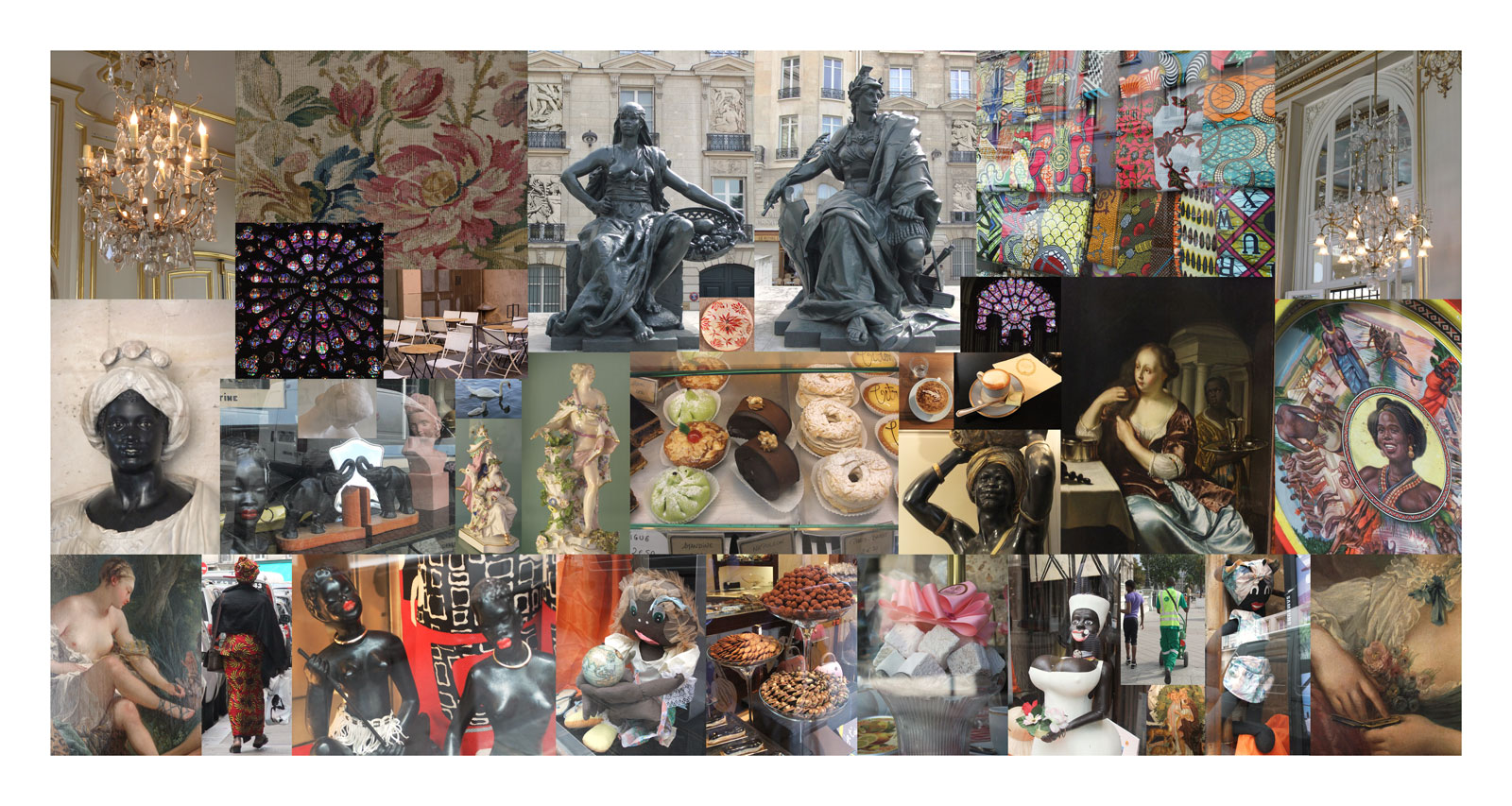Africa 1
Paris_Return of the Empire
1998-2011
Paris: Return of the Empire, a series of 19 large photo-collage inkjet prints, continues intercultural investigations with Paris as the focus. During a 4 month Canada Council International artist residency there (2011), with the perspective of ‘outsider’, through the lens of my camera, I observed and recorded aspects of the multiple cultures co-existing in Paris. Preceding the vicious spate of terrorist events executed across Europe, this work points to cultural frictions and the problematic integration that European Union countries are struggling to come to terms with due to opening international borders and the global refugee crisis. France is not alone in dealing with “the return of the empire”—the influx of immigrants from the very countries on all continents that the French Empire colonized. Colonized immigrant communities are contrasted with the sometimes overt racist attitudes and deeply-held values and refinement of French art and culture, visible in painting, sculpture, couture, patisserie, food, wine, and the intellectual, philosophical, political and social qualities of French literature, music, film.
Africa 2
A series of 19th century statues of the Continents represented as women, currently situated outside the Musee d’Orsay in Paris, are prominently represented in each collage. All the figures are bare-breasted with the exception of Europe, who is portrayed clothed with a shield at hand, holding an olive branch and a cross, surrounded by the caduceus, a stack of books and a painter’s palette. In contrast Africa, the ‘cradle of human civilization’, is naïvely depicted holding a basket of sexually suggestive fruits, her foot upon a tortoise. Underlining the need for a reconsideration of social and racial assumptions, their bare-breasted condition points to an attitude that colonized people should be available for labour, as well as sexually available to the colonizers. They bring to mind the portraits of the Storyville prostitutes taken by Belloq in early 20th century New Orleans.
This series contrasts the deeply held historic values and refinement of French culture with the vibrancy of various immigrant communities evident throughout Paris. Art Deco bas-reliefs of colonial slave labour cover the outside walls of what is now the Musee Nationale de l'Histoire de l'immigration, in the 12th arrondissement, constructed for the Colonial Exposition of 1931. Visitors to Paris are unlikely to consider that the wealth and elegance of every aspect of French culture has been achieved through the cheap labour and resources (sugar, silk, minerals, slaves and more) of colonized nations. The slogan of the French Revolution--Liberté, Egalité, Fraternité---is even more poignant now than ever.
Africa 3
North Africa 2
Asia 2
North Africa 3
North America 1
North America 1
South America_Carribean 1
South America_Carribean 2
Oceania 2
Oceania 1











